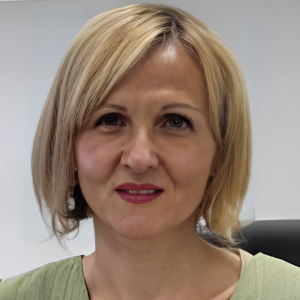Title : Determination of volatile organic compounds from the leaves of salvia species (s. Officinalis, s. Fruticosa and s. X auriculata) growing on the Island of vis, Croatia
Abstract:
Dalmatian (Salvia officinalis L.) and Greek sage (Salvia fruticosa Mill.) grow sympatrically on the island of Vis, Croatia. The island of Vis is the only part of Croatia where S. fruticosa occurs, in small, isolated populations, while S. officinalis is distributed throughout the eastern Adriatic coastal region. Both species synthesize essential oils with numerous biologically active compounds that are valued in medicine. Previous studies have shown that on the island of Vis hybridization between these two species occurs repeatedly and that there is a hybrid known as Salvia x auriculata Mill. The occurrence of the spontaneous hybrid has never been documented in the natural environment, but only as a result of breeding programs. Extraction and identification of volatile organic compounds from the leaves of S. officinalis, S. fruticosa, and S. x auriculata were performed using the solid-phase microextraction coupled with gas chromatography-mass spectrometry (SPME-Arrow-GC/MS). A total of 112 compounds were identified, of which 103 were common to all three species. Twelve compounds (camphor, 1-octen-3-ol, 3-thujanone, E-caryophyllene, 1,8-cineole, linalool, a-humulene, ß-myrcene, ß-pinene, thujone, D-limonene, and 4-thujonol), selected based on previous reports and relative abundance (%) in the plant material, were further subjected to analysis of variance and multivariate analysis. The dominant compound in all three species was 1,8-cineole, with the highest relative abundance in S. fruticosa (44.47%), followed by S. x auriculata (42.27%). The significantly lowest relative abundance of this compound was found in S. officinalis (16.59%). Multivariate analysis revealed a clear distinction of S. officinalis which was characterized by higher relative abundance of camphor, a-humulene, 1-octen-3-ol, and D-limonene. In contrast, S. fruticosa and S. x auriculata were characterized by higher abundance of caryophyllene, myrcene, 1,8-cineol, 4-thujanone, and β-pinene and grouped together, suggesting a more similar chemical composition. These preliminary results provide the basis for further detailed analyzes of the chemical profiles of S. x auriculata in particular, which will serve as a background for the selection of genotypes for the development of cultivars with desirable traits.
What will audience learn from your presentation?
- This is the first report on the chemical characterization of a spontaneous hybrid (S. x auriculata) of two Salvia species (S. officinalis and S. fruticosa),whose existence has not been recorded elsewhere but on the island of Vis, Croatia. Although there are data on chemical characterization of S. x auriculata in the scientific literature, they are very scarce and focus on S. x auriculata cultivar produced by artificial selection. In addition, this study used a sophisticated extraction and identification method (SMPE- Arrow-GC/MS) that, to our knowledge, has never been used before in the analysis of volatile compounds in S. officinalis, S. fruticosa, and S. x auriculata.
- We believe that the data presented will be a valuable source of information for future research on essential oil diversity, especially in Salvia species. The results may stimulate future research on possible natural hybridization events in other parts of the world where these two species grow sympatrically . We also hope that this will lead to new contacts and collaborations with other scientists whose research is focused on similar topics.



